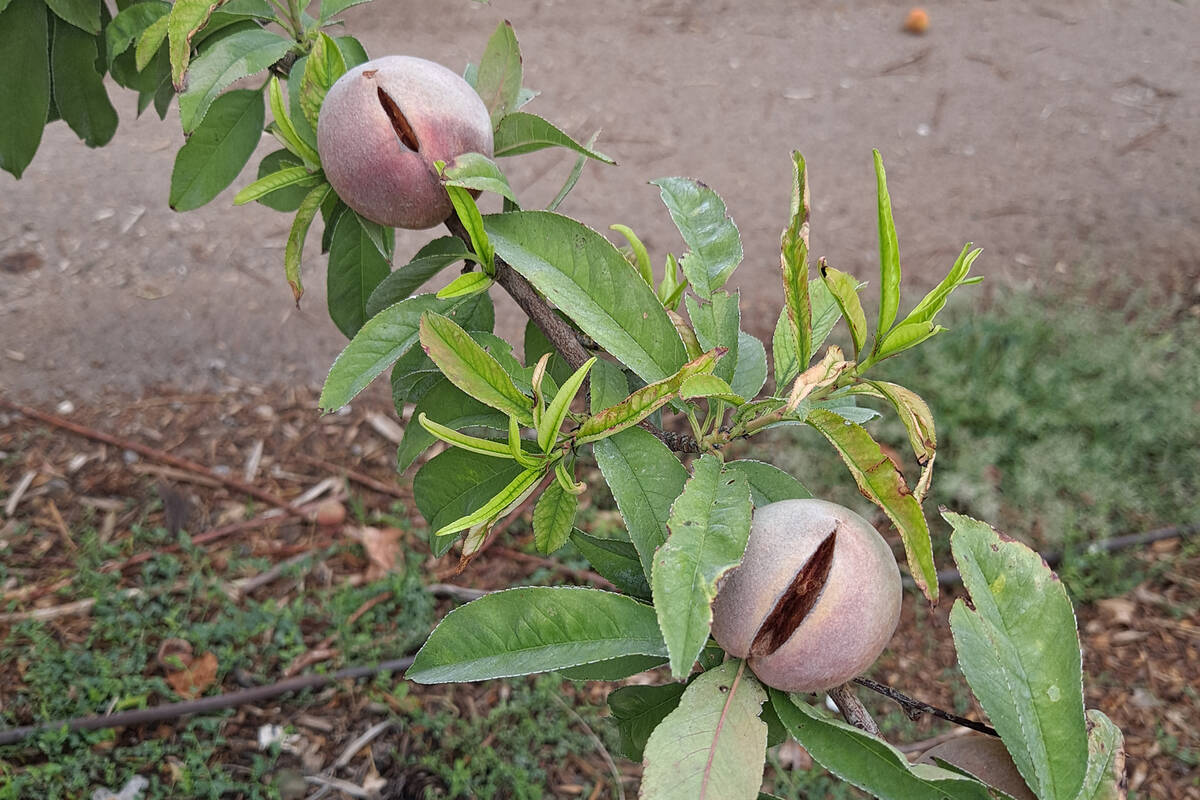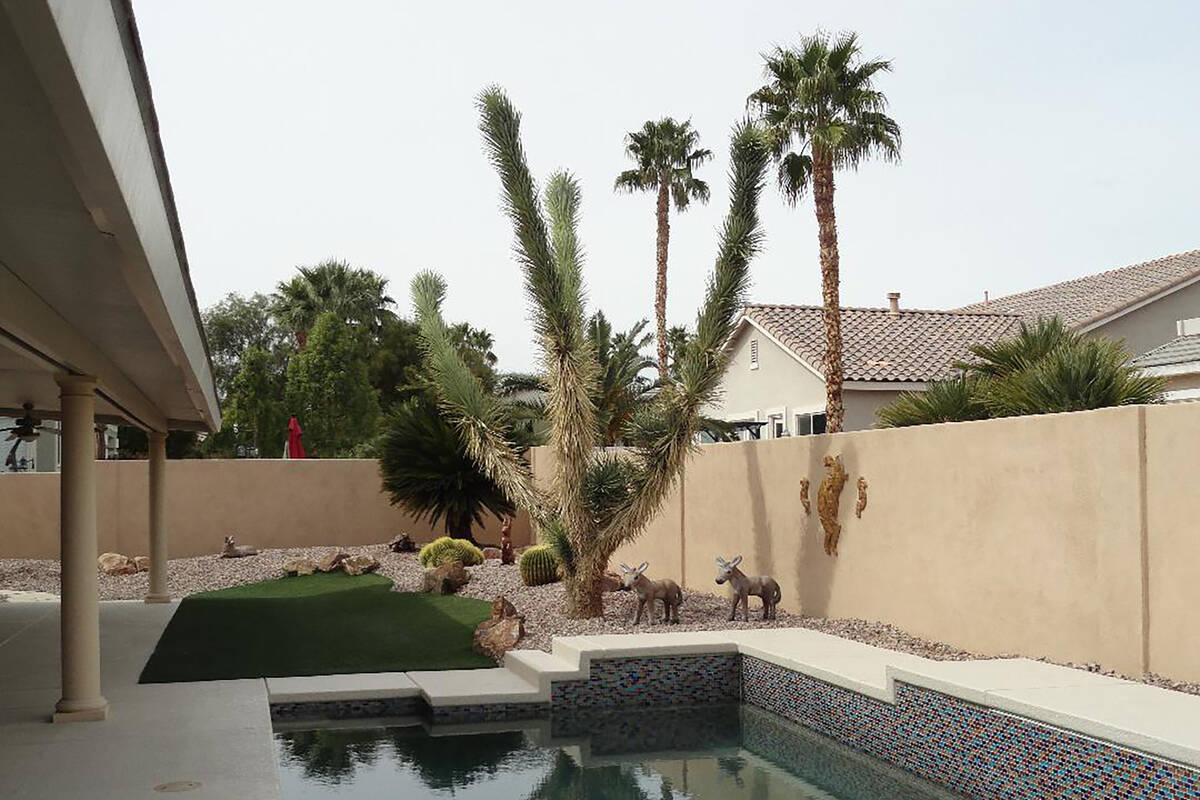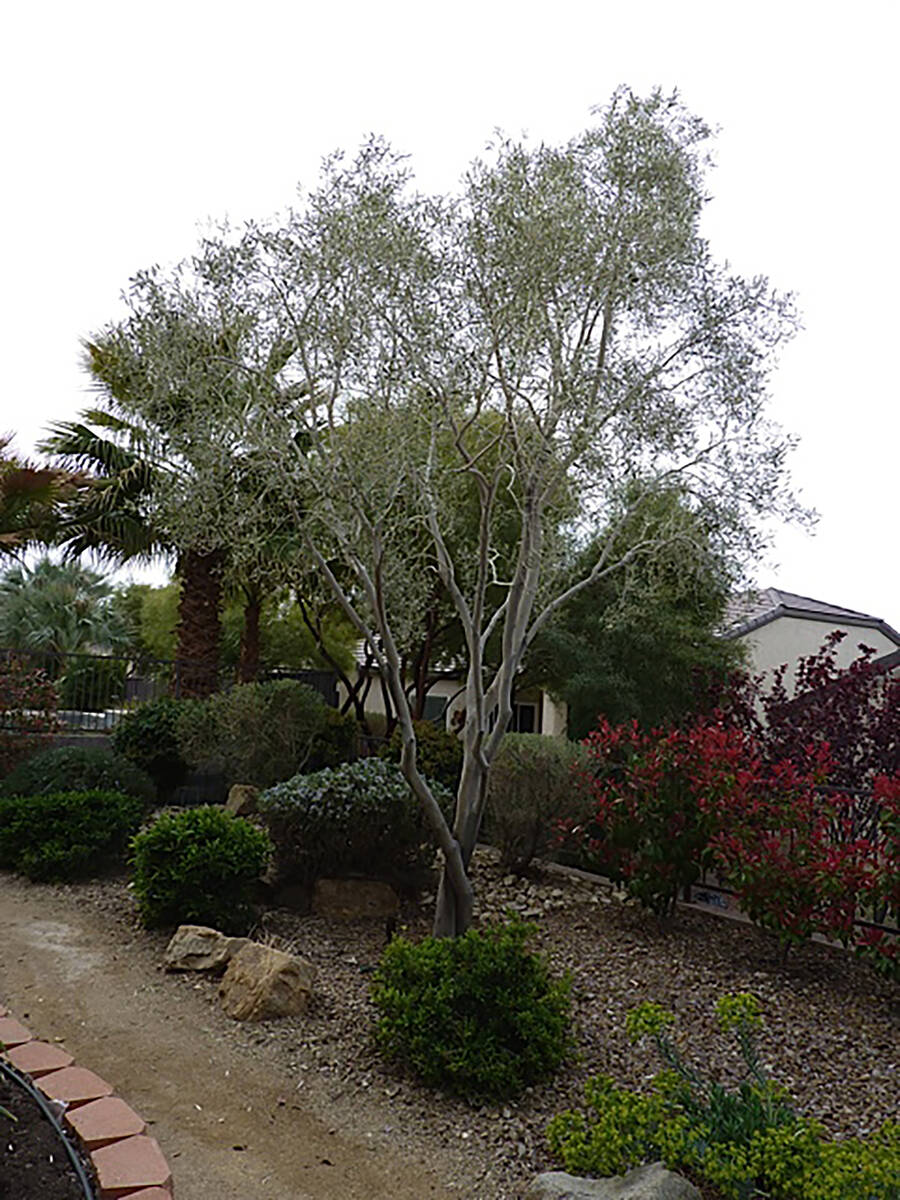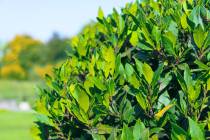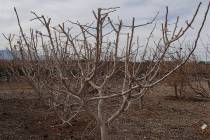With fruit production, tree’s need for water grows
Q: We moved into our home a year ago in January, and had only three delicious peaches from two existing trees. We redid our yard with a new drip system and rocks a few months ago. As I have no real knowledge of fruit tree care, is it normal for them to lose all their leaves in winter? Will they survive with Nevada’s strict one-day-per-week watering?
A: One day a week will be enough water from December through about March. It depends on how much water is held by your type of soil. Once a week will not be enough water for most other peach fruit production but the earliest peaches. During fruit production, water must be available through the roots (plants and soil should be watered but should not remain sopping wet) so the fruit gets large. Fruits are mostly water. Plants get this water through their roots. Make sure the trees have at least one day off from watering when it is hot.
As far as leaf drop, yes, the leaves will drop from the stems on peaches or any temperate fruit tree starting in December. It depends on the winter temperatures. Peaches begin their new growth in February and March.
All fruit trees are growing in soil covered with 2 to 3 inches of rock or wood chip mulch. My guess is that a 3-foot tall and wide fruit tree will need about 15 to 20 gallons of water each week when it is hot. If the tree is 6 feet tall and wide, then to stay healthy and productive it will need 60 to 90 gallons of water each week when it is hot.
Make sure the water applied covers at least half the canopy area. To determine the canopy, think of a giant flashlight held directly above the tree and shining down; the shadow it makes is the canopy area. When water is applied, make sure the soil is wet from the drippers to about 18 to 24 inches deep all through the canopy. Where the drip emitters are placed is not as important as giving the tree enough water.
Q: When planted about 12 years ago, my Joshua tree was barely 4½ feet tall and had three distinct arms. It now has an additional arm and seems to be growing more arms, as well as taller. Can it be pruned without damaging it? If not, can it be relocated?
A: It is difficult to prune Joshua trees without them looking weird. If you do decide to make big pruning cuts, make sure it is done in the winter. Let the cuts heal on their own. Don’t use any pruning paint unless it’s for decoration. You can use a hand pruner anytime, but I don’t see much hand pruning on yours.
The main reason for the stems getting long and green arms is watering too often. The secret to growth of desert plants is to water them less often. They respond to applied water by growing. You can water as wide as you want, just not too narrowly, near the base or too often.
The water should get deep enough to wet the roots. Watering two or three times in the summer months, deeply, and once during the winter should be enough once it gets established. Establishing the tree should take two or three years. As the tree gets taller, the canopy area gets bigger. Watering less often, the tree will need less pruning or maybe none at all.
The same is true of your golden barrel cactuses. Watering them often encourages them to grow, but they will begin rotting from the inside. Water them probably three times in the summer and once during the winter.
Both of these are xeric (desert) plants and don’t need watering so often.
When you water, use a hose or sprinkler. Watering them with a hose might take three or four applications to get water deep in the soil. A hose-end, stationary sprinkler is good enough. Set the sprinkler timer (or tell Alexa to remind you) to stop after 1½ or two hours.
When irrigating by hand, make sure the water gets deep enough (Joshuas should get 18 to 24 inches deep; barrel cactuses 12 to 18 inches deep). Make sure the water is applied wide enough, too. Adjust water pressure so the sprinkler applies water in a circle 8 to 10 feet in diameter.
Q: I’m basing my diagnosis of verticillium wilt on my tree upon what I’ve read on the internet. We have cut off one of the affected branches but did not see the dark ring mentioned in the link you sent. We pruned all the branches off one of the trees at one point, and when they grew back, the problem was still there. Any suggestions you can offer that would help us save these trees would be appreciated.
A: Be careful of information shared on the internet unless it’s from a university website. Not finding a dark ring on cut tree branches doesn’t surprise me.
Verticillium wilt is a fungal disease that plugs a plant’s water-conducting system. It is a disease that affects branches or stems usually on one side of the plant. This is why it looks like borer damage. But verticillium disease may be on sides of the tree (north and east) not common to borers (often seen in sun-damaged areas of trees on the south or west sides). By the time we see it, it causes leaves to collapse, turning brown and crispy, just like it has borers. There are plants that are more resistant to this disease. Unlike with borers, mature trees may take several years to die.
This kind of disease is terminal in our climate, and there is nothing you can do about it. The soil may become contaminated with high amounts of this disease organism if the soil is kept wet. Improving drainage may help. It’s probably best to find a new location to keep plants uninfected or use trees resistant to this disease.
Bob Morris is a horticulture expert and professor emeritus of UNLV. Visit his blog at xtremehorticulture.blogspot.com. Send questions to Extremehort@aol.com.



